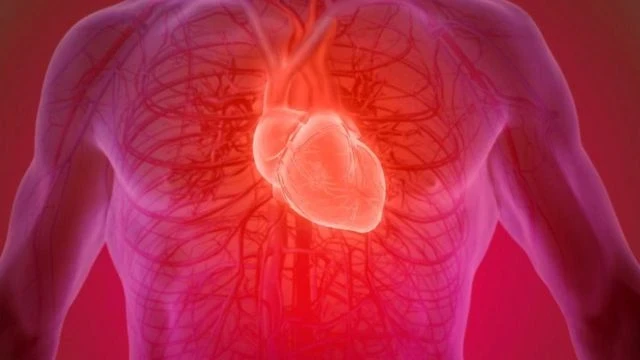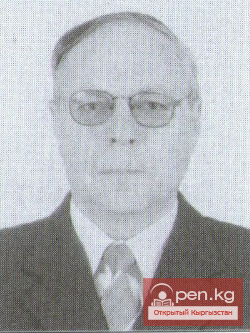- Igor Pershukov is a professor and head of the Department of Hospital Therapy and Oncology at Jalal-Abad State University, as well as a member of the American College of Cardiology and the American Society of Cardiovascular Angiography and Interventions.
- How did you start your journey in medicine and what led you to cardiology?
- Let's say I have been studying medicine since 1988, when I graduated from high school and enrolled in the medical institute in the USSR. The training then lasted six years for future general practitioners and pediatricians, while dentists completed their course in five years.
After finishing the institute, I graduated with honors and entered a cardiology residency at the Cardiology Research Center (CRC) of the Russian Academy of Medical Sciences (RAMS) in Moscow. This program lasted two years. Then I continued my studies in graduate school in cardiology and radiological diagnostics, which also took place at this center under the guidance of Academician E.I. Chazov. The three years of graduate school were associated with practical work—I gathered patients for my research and conducted catheter studies. Initially, I mastered the methods under the guidance of senior colleagues from the A.L. Myasnikov Institute of Cardiology.
Thus, my education and training in cardiology took 11 years: 6 years at university and 5 years in residency and graduate school.
To support myself in Moscow during my studies, I worked as a physician in private emergency care.
My further career was associated with mastering new methods of diagnosing and treating cardiovascular diseases. At present, I hold four certificates in the specialties: cardiology, radiology, endovascular radiology, and cardiovascular surgery, obtained through primary retraining, which was previously required for obtaining these specialties. Each such retraining included at least 500 hours of training.
My scientific activity developed in parallel with clinical practice. I completed my doctoral dissertation three years after defending my candidate dissertation, defending it at the Medical Center of the Presidential Administration of the Russian Federation, without interrupting my work.
Since then, I have also been engaged in teaching, starting as an assistant and progressing to professor of the department; however, my medical practice has never been interrupted due to studies or scientific work: I have always remained a physician.
In ten years of working in outpatient cardiology, I have examined over 24,000 patients and performed hundreds of diagnostic and therapeutic procedures. Currently, my total experience as a physician is 31 years, of which I have worked in cardiology for 29 years.
- In your opinion, what path must one take to become a truly qualified physician?
- First, let's clarify which type of physician we are talking about: a general practitioner or a specialist. Currently, graduates of medical universities become general practitioners after six years of study, possessing basic knowledge in various fields of medicine. These physicians must be able to diagnose and treat a wide range of diseases, as well as refer patients for necessary examinations.
When it comes to specialized physicians, such as cardiologists, pulmonologists, or neurosurgeons, their training requires additional time after basic education.
In different countries, the training of physicians is organized differently. For example, in the UK, training can take up to 11 years, while in the USA, surgical residents study for 7 years, and internists for 5 years.
Comparing medical education in different countries, I believe that six years in medical school is the minimum necessary period, and further training in specialties should take from four to seven years.
In therapeutic specialties, such as cardiology or pulmonology, preparing a competent specialist requires 4-5 years, while in surgery, it takes 5-7 years. In the USA, non-surgical residents study for 5 years, while surgeons study for 7 years, which is justified, as during this period they gain practical experience working with patients and perform an increasing number of procedures.
I personally felt like a qualified cardiologist only after finishing graduate school, after five years of training at one of the best cardiology centers in Russia. My first mentor, Irina Savelieva, taught me many important aspects of clinical examination of cardiology patients, and I continued to develop my skills throughout my residency and graduate studies.
- In your experience, how can one balance long-term education with personal life and financial difficulties?
- In the USSR, there was a program that included a one-year internship and a two-year residency. Usually, after university, several years of practice in a district hospital were required before one could enter a residency.
Today, in a rapidly changing world, graduates strive to start working as soon as possible, which often complicates the formation of high-class specialists. In small clinics, there is no opportunity to encounter the cases that occur in large research centers.
In many countries, there are loan programs for medical students, allowing them to earn while repaying their education loans over 20-25 years. There are also support programs for residents, which are extremely important for training qualified physicians.
In the short time of residency, it is impossible to fully master complex specialties such as cardiology or oncology. During this time, one can only study the basics.
Everyone chooses their own path. For example, I started a family during my residency, and I had a child during my graduate studies. Putting personal life on hold, as many physicians do in other countries, is a personal decision for each individual.
To ensure good training for physicians, the government should:
- develop support programs, including long-term loans with low interest rates;
- create training centers based in multidisciplinary hospitals where residents can work with real patients;
- invite leading specialists to universities and research institutes to form medical and scientific schools.
Training physicians is becoming increasingly complex, even considering technological advancements, which requires more and more resources for education.













































